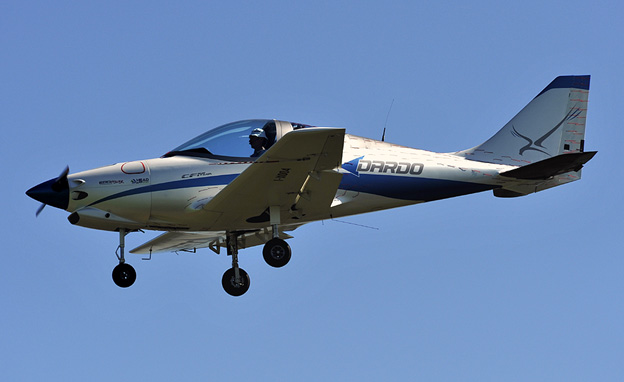The Italian Aerospace Information Web
by Aeromedia - corso Giambone 46/18 - 10135 Torino (Italy)

| Design specifications and performance of CFM Air Dardo released by the manufacturer 97 kW (130 hp) Rotax 914 UL (with EPA Power electornic fuel injection system) | |
| MAIN DIMENSIONS | |
| Wing Span | 8.40 m (27.55 ft) |
| Length overall | 7.40 m (24.28 ft) |
| Height | 2,50 m (8.20 ft) |
| Maximum cabin width | 1,30 m (4.26 ft) |
| Wing area | 10,60 m2 (114 ft2) |
| WEIGHTS AND LOADS | |
| Maximum take-off weight (including ballistic parachute) | 600 kg (1,323 lb) |
| PERFORMANCE | |
| Maximum Speed (VNE Never-Exceed Speed) | 184 knots (340 km/h, 211 mph) |
| Cruising Speed at Max Cont Power at Sea Level (VC 100%) | 151 knots (280 km/h, 174 mph) |
| Cruising Speed at 75% Engine Power at Sea Level (VC 75%) | 135 knots (250 km/h, 155 mph) |
| Maneuvering Speed (VA) | 97 knots (180 km/h, 112 mph) |
| Speed (extended flaps) (VFE) | 81 knots (150 km/h, 93 mph) |
| Clean Stall Speed (retracted flaps) (VS1) | 45.8 knots (85 km/h, 53 mph) |
| Stall Speed (extended flaps) (VS0) | 34,5 nodi (65 km/h) |
| Maximum Gust Intensity Speed (VB) | 134 knots (250 kmh, 155 mph) |
In the picture: CFM Air Dardo prototype I-X004 lands at Turin/Aeritalia airport after an early test flight, in July 2014. C.dr Maurizio Cheli, former astronaut and ex-Chief Test Pilot for Alenia Aeronautica is at the controls. Wool tufts for aerodynamics tests are taped on the aircraft rear fuselage and tail unit. (Aeromedia)
(Aeromedia, July 2014)